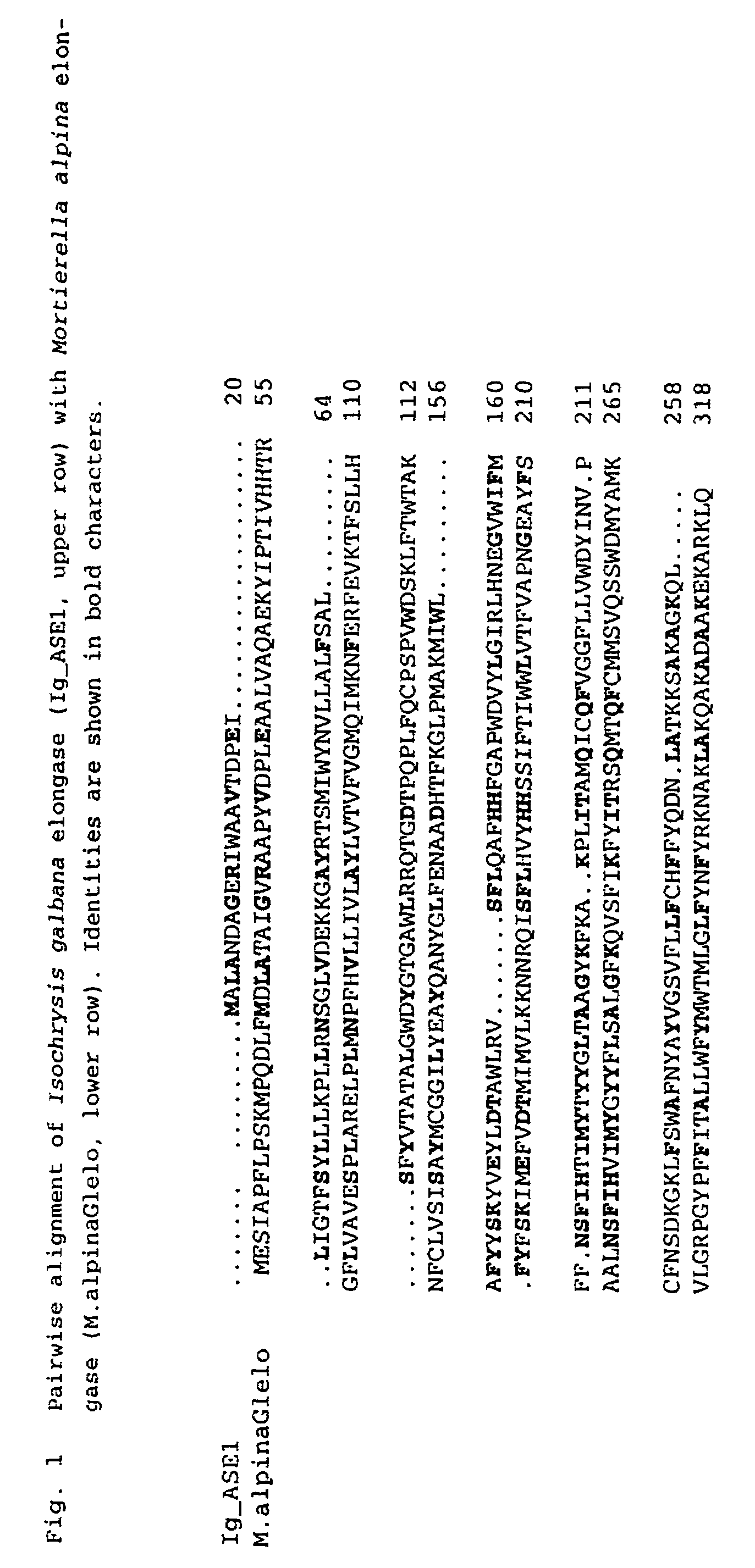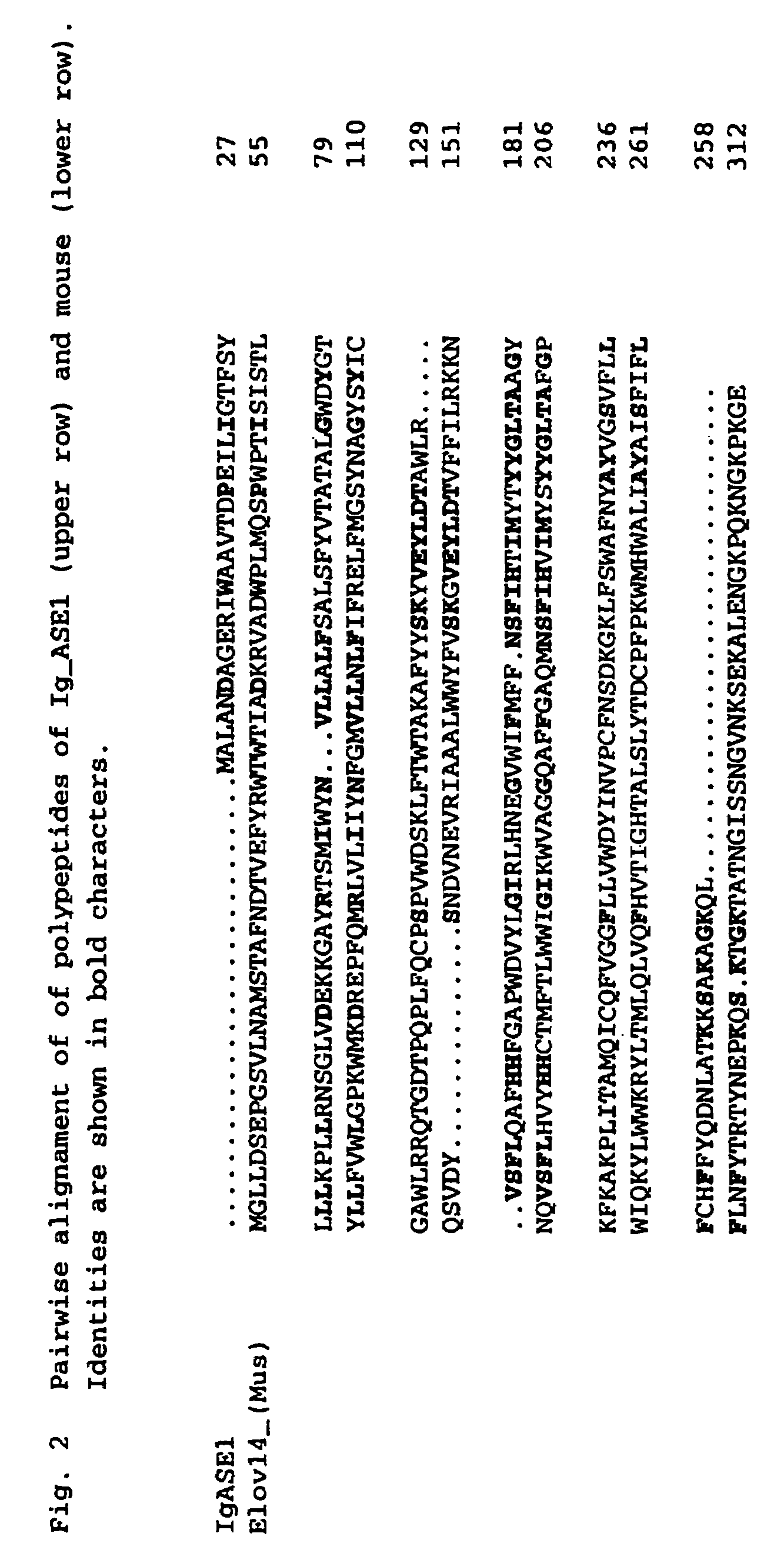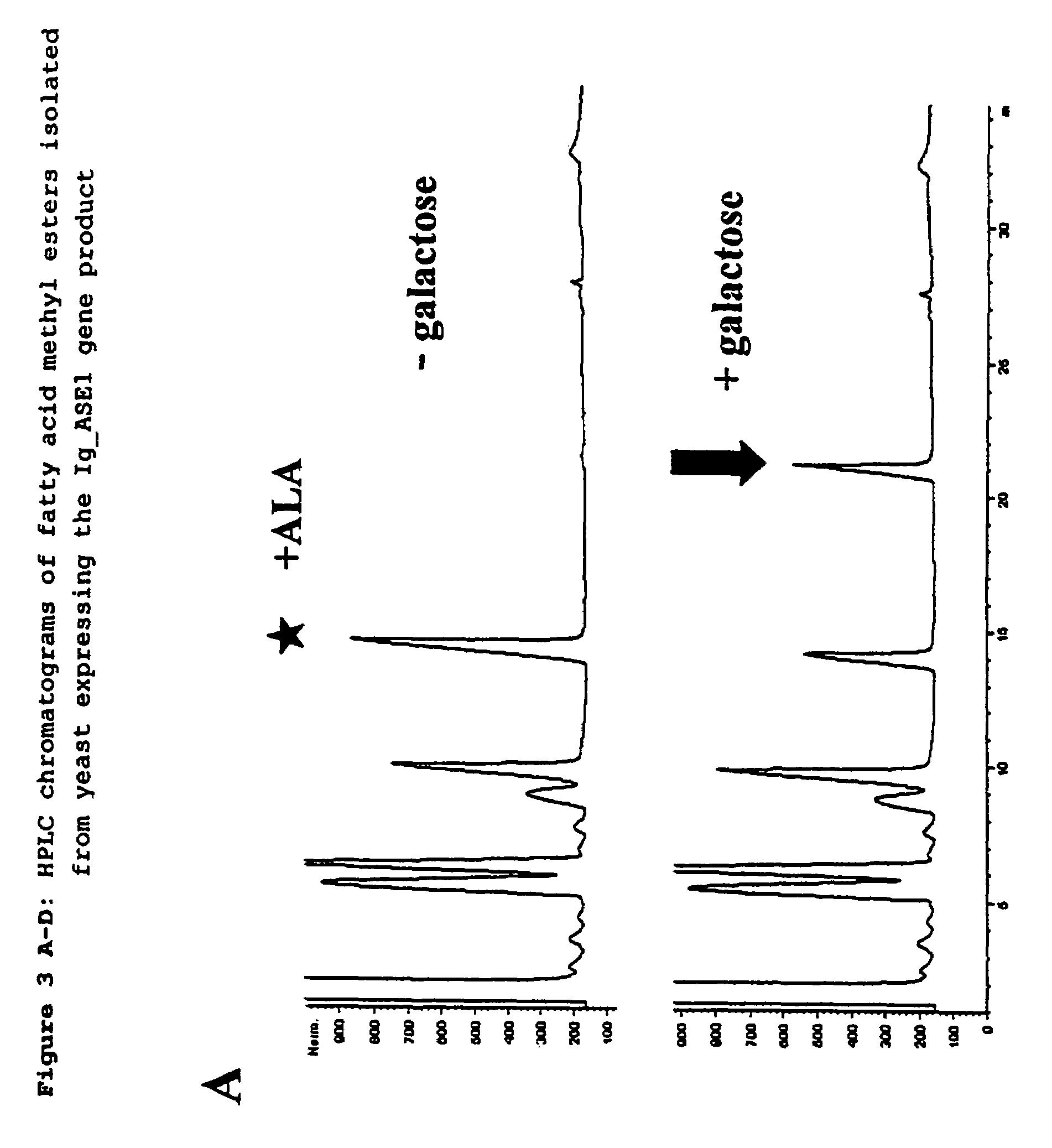Elongase gene and production of Delta9-polyunsaturated fatty acids
a polyunsaturated fatty acid and elongase gene technology, applied in the direction of transferases, enzymology, organic chemistry, etc., can solve the problems of time-consuming and difficult process of selecting new plant cultivars bred time-consuming and difficult process for improving the strain for the production of a particular molecule, and even impossible, so as to increase the capacity of the cell to produce, increase the biosynthetic flux
- Summary
- Abstract
- Description
- Claims
- Application Information
AI Technical Summary
Benefits of technology
Problems solved by technology
Method used
Image
Examples
example 1
General Processes
a) Cloning Processes and General Methods
[0177]Cloning processes such as, for example, restriction cleavages, agarose gel electrophoresis, purification of DNA fragments, transfer of nucleic acids to nitrocellulose and nylon membranes, linkage of DNA fragments, transformation of Escherichia coli and yeast cells, growth of bacteria and sequence analysis of recombinant DNA were carried out as described in Sambrook et al. (1989) (Cold Spring Harbor Laboratory Press: ISBN 0-87969-309-6) or Kaiser, Michaelis and Mitchell (1994) “Methods in Yeast Genetics” (Cold Spring Harbor Laboratory Press: ISBN 0-87969-451-3). Transformation and cultivation of algae such as Chlorella or Phaeodactylum are performed as described by El-Sheekh (1999), Biologia Plantarum 42: 209-216; Apt et al. (1996), Molecular and General Genetics 252 (5): 872-9.
b) Chemicals:
[0178]The chemicals used were obtained, if not mentioned otherwise in the text, in p.a. quality from the companies Fluka (Neu-Ulm), M...
example 2
[0207]The details for the isolation of total DNA relate to the working up of one gram fresh weight of material harvested by filtration.
CTAB Buffer:
[0208]2% (w / v) N-cetyl-N,N,N-trimethylammonium bromide (CTAB);[0209]100 mM Tris HCl pH 8.0;[0210]1.4 M NaCl;[0211]20 mM EDTA.
N-Laurylsarcosine Buffer:[0212]10% (w / v) N-laurylsarcosine;[0213]100 mM Tris HCl pH 8.0;[0214]20 mM EDTA.
[0215]The material was homogenized under liquid nitrogen with quartz sand in a mortar to give a fine powder and transferred to 2 ml Eppendorf cups. The frozen material was then covered with a layer of 1 ml of decomposition buffer (1 ml CTAB buffer, 100 ml of N-laurylsarcosine buffer, 20 ml of beta-mercaptoethanol and 10 ml of proteinase K solution, 10 mg / ml) and incubated at 60° C. for one hour with continuous shaking. The homogenate obtained was distributed into two Eppendorf vessels (2 ml) and extracted twice by shaking with the same volume of chloroform / isoamyl alcohol (24:1). For phase...
example 3
Isolation of Total RNA and Poly(A)+RNA from Algae
[0216]For the investigation of transcripts, both total RNA and poly(A)+RNA were isolated.
[0217]Algal cultures were harvested by centrifugation at 3000 g for 5 minutes. The pellets were immediately frozen in liquid nitrogen (−70° C.). Algal material (1 g) was homogenized with a pestle in a mortar under liquid nitrogen. The material was desintegrated to homogeneity in two volumes of buffer which was TriPure™ Isolation Reagent (Roche). The total RNA was then isolated following the manufacturer's protocol.
[0218]Isolation of Poly(A)+RNA was carried out using Amersham Pharmacia mRNA Isolation Kit following the instructions of the manufacturer's protocol.
[0219]After determination of the concentration of the RNA or of the poly(A)+RNA, the RNA was precipitated by addition of 1 / 10 volumes of 3 M sodium acetate pH 4.6 and 2 volumes of ethanol and stored at −70° C.
PUM
| Property | Measurement | Unit |
|---|---|---|
| weight | aaaaa | aaaaa |
| concentration | aaaaa | aaaaa |
| pH | aaaaa | aaaaa |
Abstract
Description
Claims
Application Information
 Login to View More
Login to View More - R&D
- Intellectual Property
- Life Sciences
- Materials
- Tech Scout
- Unparalleled Data Quality
- Higher Quality Content
- 60% Fewer Hallucinations
Browse by: Latest US Patents, China's latest patents, Technical Efficacy Thesaurus, Application Domain, Technology Topic, Popular Technical Reports.
© 2025 PatSnap. All rights reserved.Legal|Privacy policy|Modern Slavery Act Transparency Statement|Sitemap|About US| Contact US: help@patsnap.com



